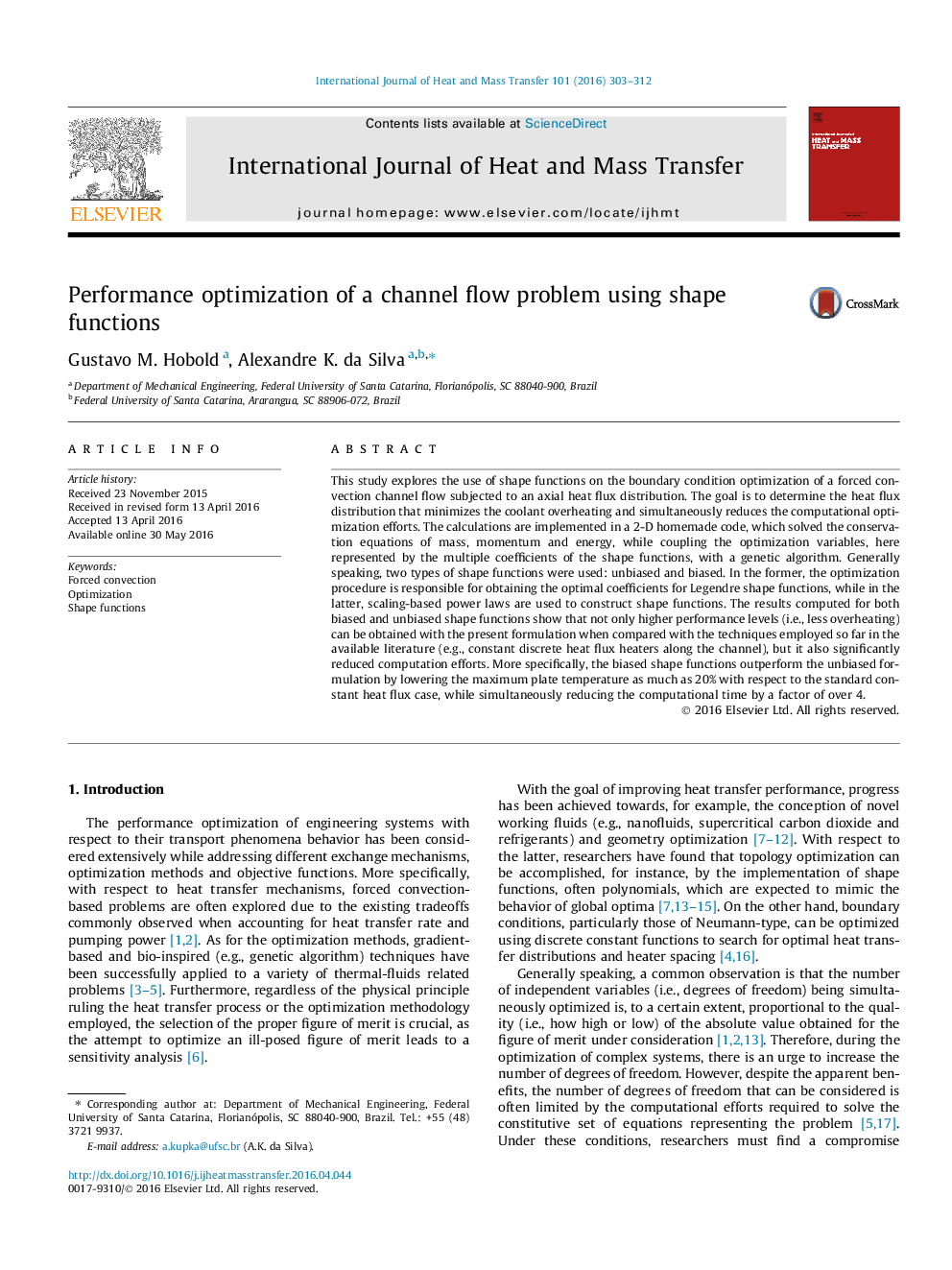| Article ID | Journal | Published Year | Pages | File Type |
|---|---|---|---|---|
| 7055228 | International Journal of Heat and Mass Transfer | 2016 | 10 Pages |
Abstract
This study explores the use of shape functions on the boundary condition optimization of a forced convection channel flow subjected to an axial heat flux distribution. The goal is to determine the heat flux distribution that minimizes the coolant overheating and simultaneously reduces the computational optimization efforts. The calculations are implemented in a 2-D homemade code, which solved the conservation equations of mass, momentum and energy, while coupling the optimization variables, here represented by the multiple coefficients of the shape functions, with a genetic algorithm. Generally speaking, two types of shape functions were used: unbiased and biased. In the former, the optimization procedure is responsible for obtaining the optimal coefficients for Legendre shape functions, while in the latter, scaling-based power laws are used to construct shape functions. The results computed for both biased and unbiased shape functions show that not only higher performance levels (i.e., less overheating) can be obtained with the present formulation when compared with the techniques employed so far in the available literature (e.g., constant discrete heat flux heaters along the channel), but it also significantly reduced computation efforts. More specifically, the biased shape functions outperform the unbiased formulation by lowering the maximum plate temperature as much as 20% with respect to the standard constant heat flux case, while simultaneously reducing the computational time by a factor of over 4.
Related Topics
Physical Sciences and Engineering
Chemical Engineering
Fluid Flow and Transfer Processes
Authors
Gustavo M. Hobold, Alexandre K. da Silva,
